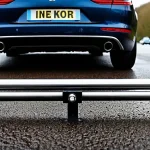Actionable steps to optimise vehicle aerodynamics for better motorway fuel economy
Improving vehicle aerodynamics is a key factor in boosting motorway fuel economy. One practical step is to modify the vehicle exterior by removing accessories such as roof racks, spoilers, or bike carriers. These add-ons increase drag, forcing the engine to work harder and consume more fuel at motorway speeds.
Keeping all windows and sunroofs closed while driving on the motorway is another simple, yet often overlooked tip. Open windows disrupt the smooth airflow around the car, increasing drag and lowering fuel efficiency. By maintaining a sealed cabin, drivers can enjoy more streamlined aerodynamics without altering their vehicle physically.
Also to discover : Extend your tires’ lifespan: essential wheel alignment tips for uk drivers
Equally important is maintaining proper tyre pressures. Underinflated tyres increase rolling resistance, indirectly affecting aerodynamic performance through more energy loss. Regularly checking and pumping tyres to the manufacturer’s recommended pressure supports better fuel economy and safer UK driving.
Finally, removing any external clutter, such as bike mounts or loose items attached outside, can reduce unnecessary drag. These straightforward practical aerodynamics tips help optimise your vehicle’s performance and contribute to significant fuel savings on long motorway journeys.
Additional reading : Unlocking the secrets of 90s british cars: the ultimate handbook for diagnosing and fixing electrical issues
Explaining how aerodynamics affect fuel consumption on UK motorways
Understanding the science behind fuel efficiency
Aerodynamic principles are crucial for improving fuel efficiency on UK motorways. As vehicles travel at higher speeds, such as the typical 70 mph limit, drag reduction becomes essential. Drag, the air resistance opposing a vehicle’s motion, increases exponentially with speed. This means that small improvements in aerodynamics can lead to significant fuel savings.
The relationship between drag and fuel use is direct: as drag rises, the engine works harder, consuming more fuel. For example, a standard car traveling at 70 mph experiences considerably more air resistance than at 50 mph, causing fuel efficiency to drop. Designing vehicles with streamlined shapes, smooth surfaces, and reduced frontal areas helps minimize drag.
In practical terms, even modest drag reductions can translate into noticeable fuel savings during motorway driving. For UK motorists, where long-distance travel is common on motorways, optimizing aerodynamics can reduce fuel bills and lower environmental impact. Understanding and applying these aerodynamic principles not only benefits costs but also supports greener travel on UK roads.
UK-specific factors influencing aerodynamic efficiency
Examining local elements affecting vehicle design and performance
In the UK, vehicle types commonly encountered include compact hatchbacks, estate cars, and smaller SUVs, each with distinct aerodynamic profiles. Unlike larger vehicles often seen elsewhere, these UK vehicles typically focus on optimizing shape for urban and motorway conditions, making aerodynamics a critical design aspect.
Motorway regulations also play a substantial role. The general speed limit on UK motorways is 70 mph, lower than some countries, which directly affects aerodynamic efficiency concerns. At these speeds, drag forces impact fuel consumption and emissions, so manufacturers aim to balance performance with efficiency tailored to UK regulations.
Weather conditions in the UK, known for frequent rain and wind, influence real-world driving. Aerodynamic stability becomes essential for safety under gusty or wet conditions. Car designs often integrate features like wind deflectors and tighter body panels to maintain steady airflow and reduce risks on slippery motorways.
Together, these UK-specific factors shape how vehicles are engineered—reflecting the reality of local real-world driving and regulatory environments affecting aerodynamics and overall vehicle performance.
Visual aids and real-world examples for improving aerodynamics
Visual guides play a crucial role in understanding how simple adjustments can enhance vehicle aerodynamics. Diagrams clearly show modifications like adding rear spoilers or smoothing underbody panels, which reduce drag and improve fuel efficiency. Before/after comparisons of these adjustments offer tangible proof of their benefits, making the improvements easy to grasp.
One UK driver shared how installing a roof deflector reduced their car’s drag coefficient significantly, resulting in noticeable fuel savings during long commutes. Such fuel savings examples demonstrate the real-world impact of aerodynamic tweaks—often translating directly to lower fuel costs and decreased emissions.
Measurement tools, like drag coefficient meters or specialized apps, help track these changes over time. This allows drivers to assess the effectiveness of their modifications accurately. Combining visual aids with case studies ensures a practical, evidence-based approach to improving vehicle aerodynamics that resonates with UK drivers looking to optimize performance and economy.
Essential maintenance and checks for ongoing aerodynamic performance
Keeping your vehicle streamlined over time
Regular maintenance is crucial to sustain your car’s aerodynamic efficiency and, consequently, its fuel economy. Dirt buildup and debris can disrupt airflow, increasing drag and reducing fuel economy. Therefore, routine cleaning, especially of the undercarriage and aerodynamic components, is a simple yet effective step to maintain optimal performance.
Removing unnecessary accessories that add weight or alter airflow—such as roof racks or bulky spoilers—is also important. These modifications can negate the benefits of aerodynamic design by increasing resistance.
When adding or modifying aerodynamic parts, it’s essential to ensure they remain compliant with UK laws and MOT requirements. Non-compliant modifications can affect your vehicle’s safety standards and result in MOT failures. Regular checks on components like side skirts or spoilers help verify they are securely attached and not causing legal or safety issues.
By integrating these upkeep practices, you ensure ongoing aerodynamic performance that supports better fuel economy and meets legal standards, prolonging both vehicle efficiency and compliance.

